Abstract
A single intranasal dose of 10(7-0) EID50 recombinant WRL 105 strain live attenuated influenza vaccine was administered intranasally to 193 volunteers either as nose drops or by one of three spray devices which produced sprays of differing physical characteristics. In volunteers with homologous haemagglutinating inhibiting antibody titres of less than or equal to 20 before vaccination, seroconversion rates varied widely from 80% following the administration of drops to 71%, 57% and 28% with the three spray devices. In the week following vaccination 16 (22%) of 74 volunteers who were found to show a fourfold or greater antibody response to took analgesics to control symptoms in comparison with 4 (7%) of 58 volunteers who exhibited no serological response to vaccination (P less than 0-05). However, neither the occurrence of upper respiratory nor systemic symptoms were significantly different in these two groups and the degree of attenuation of the recombinant WRL 105 strain appears to be acceptable for future use.
Full text
PDF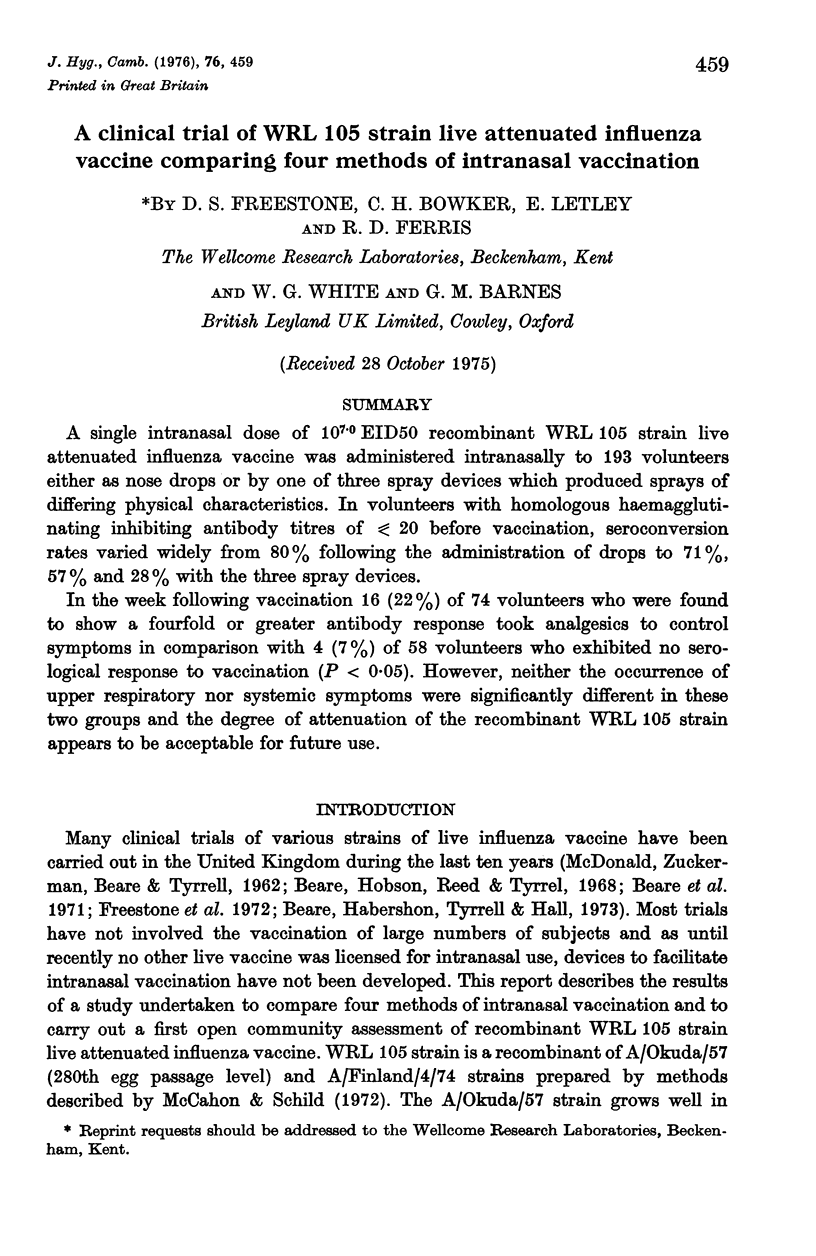
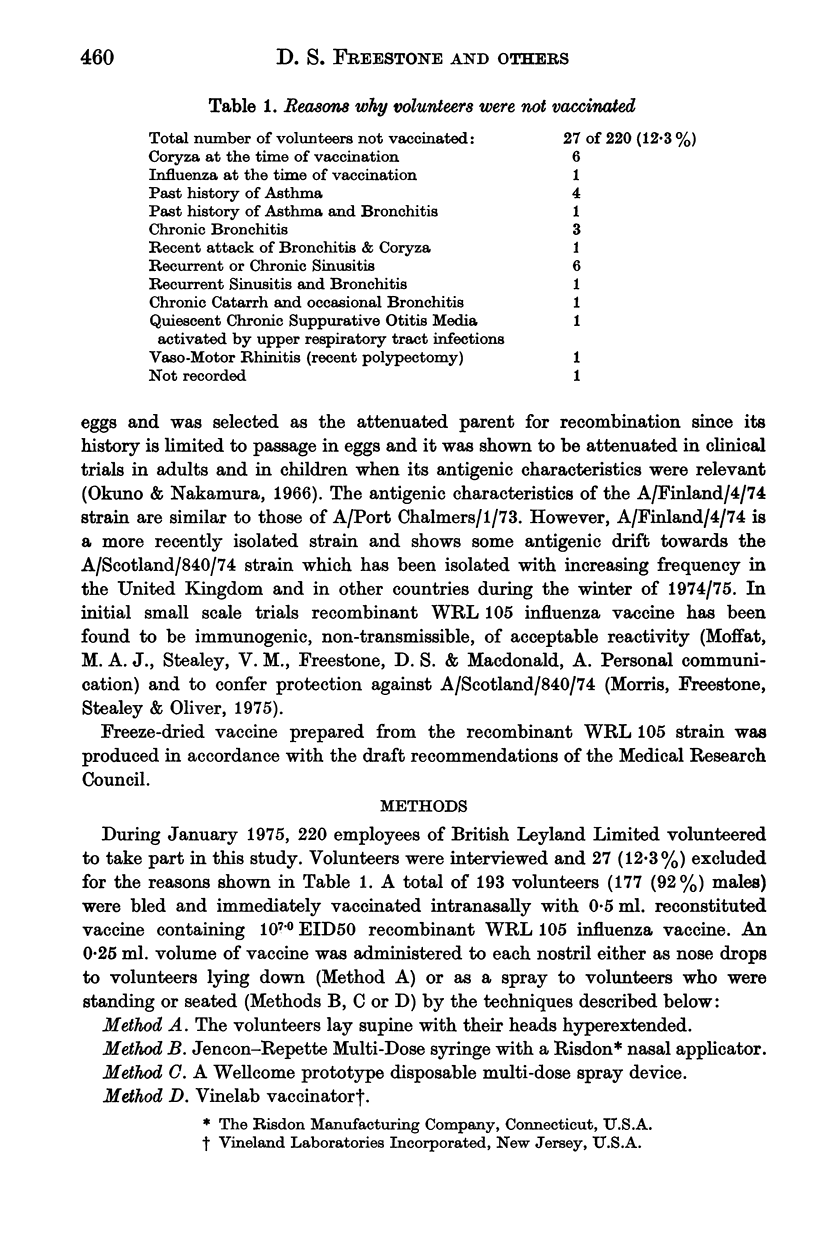
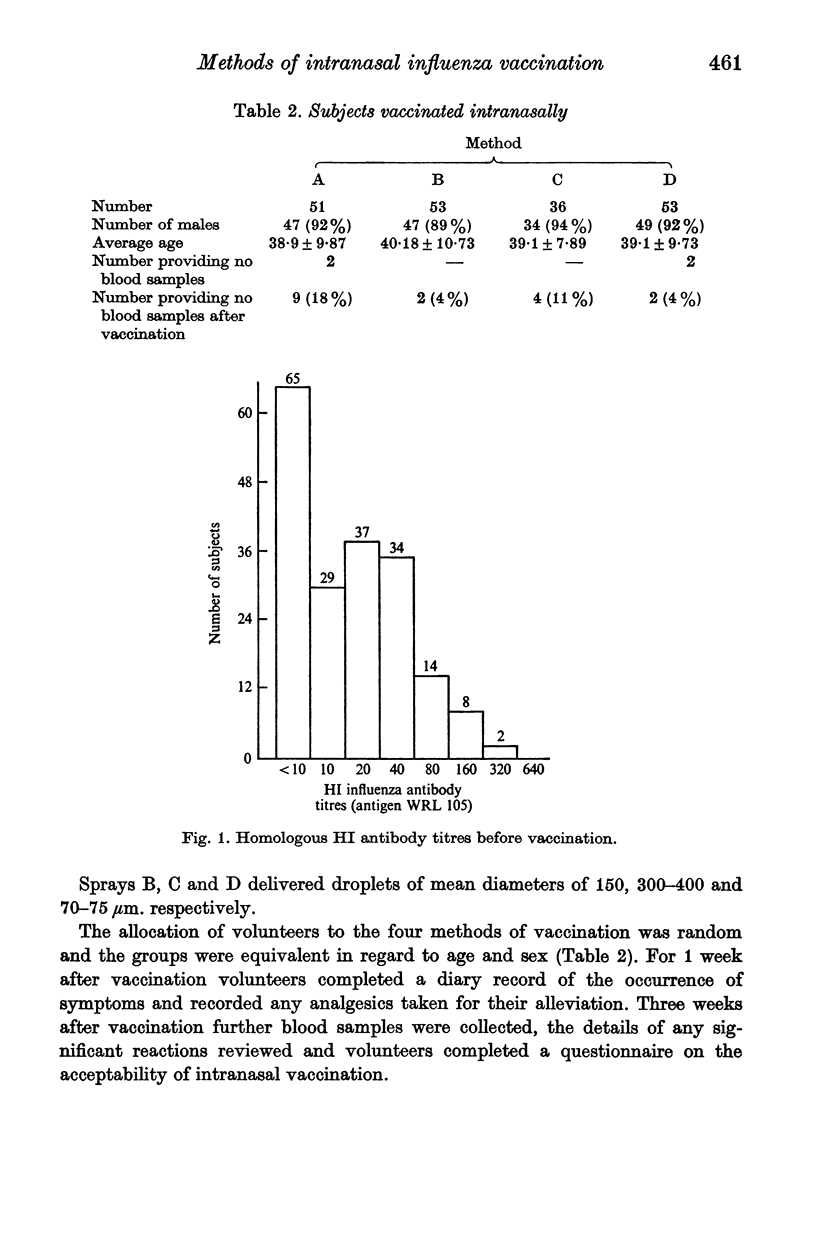
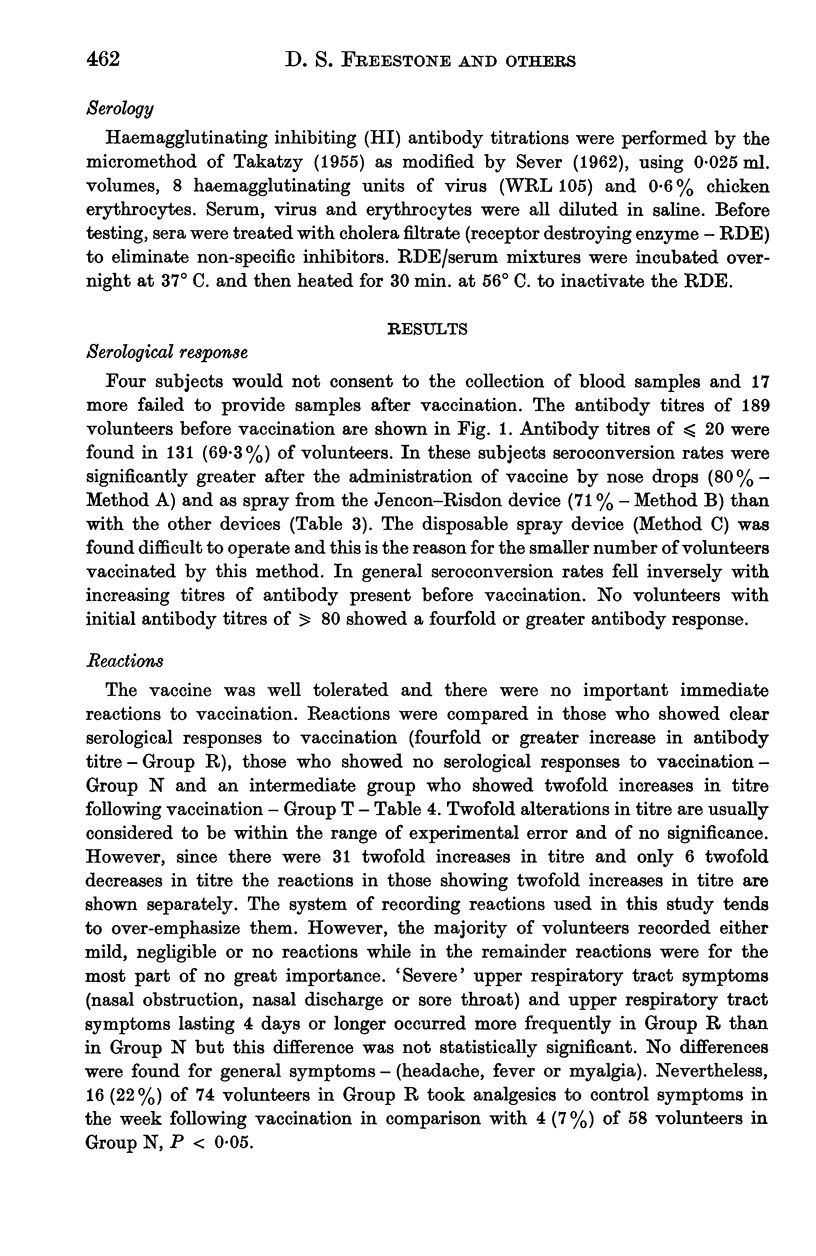
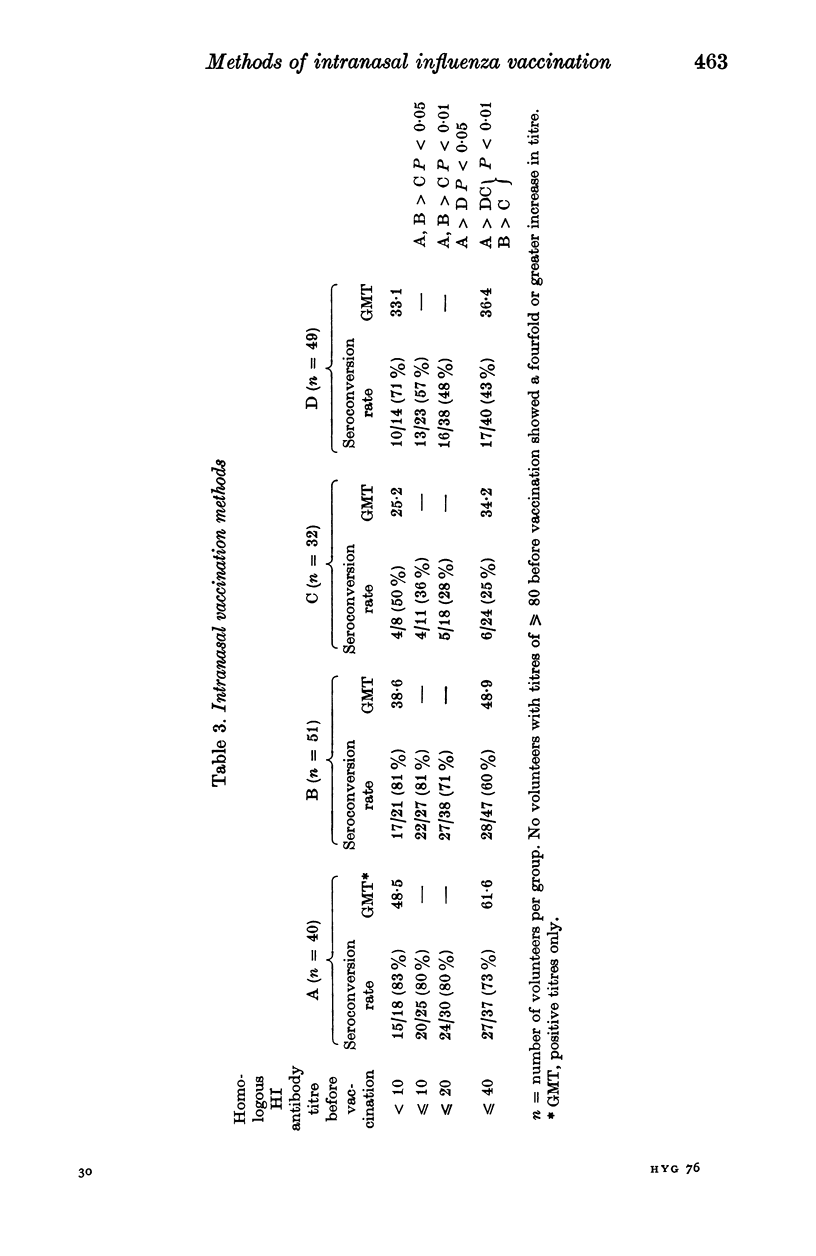
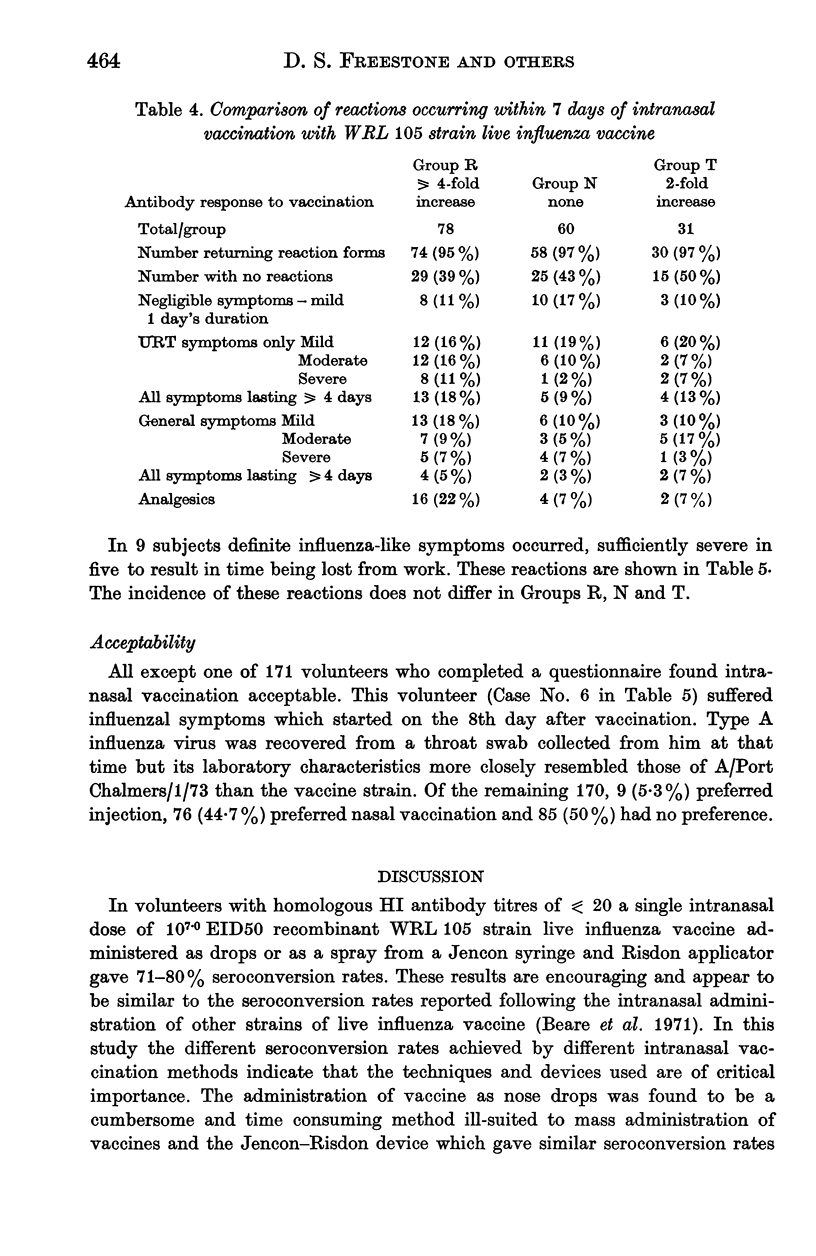
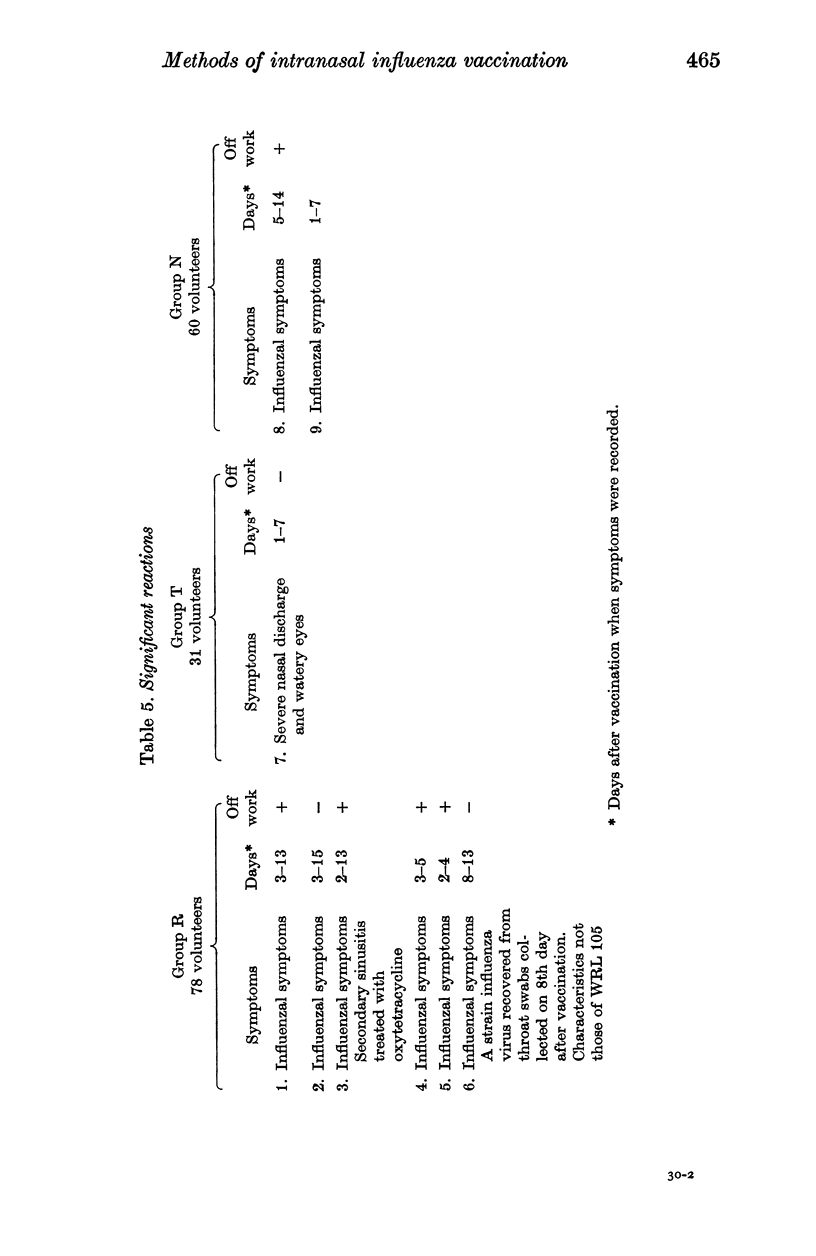
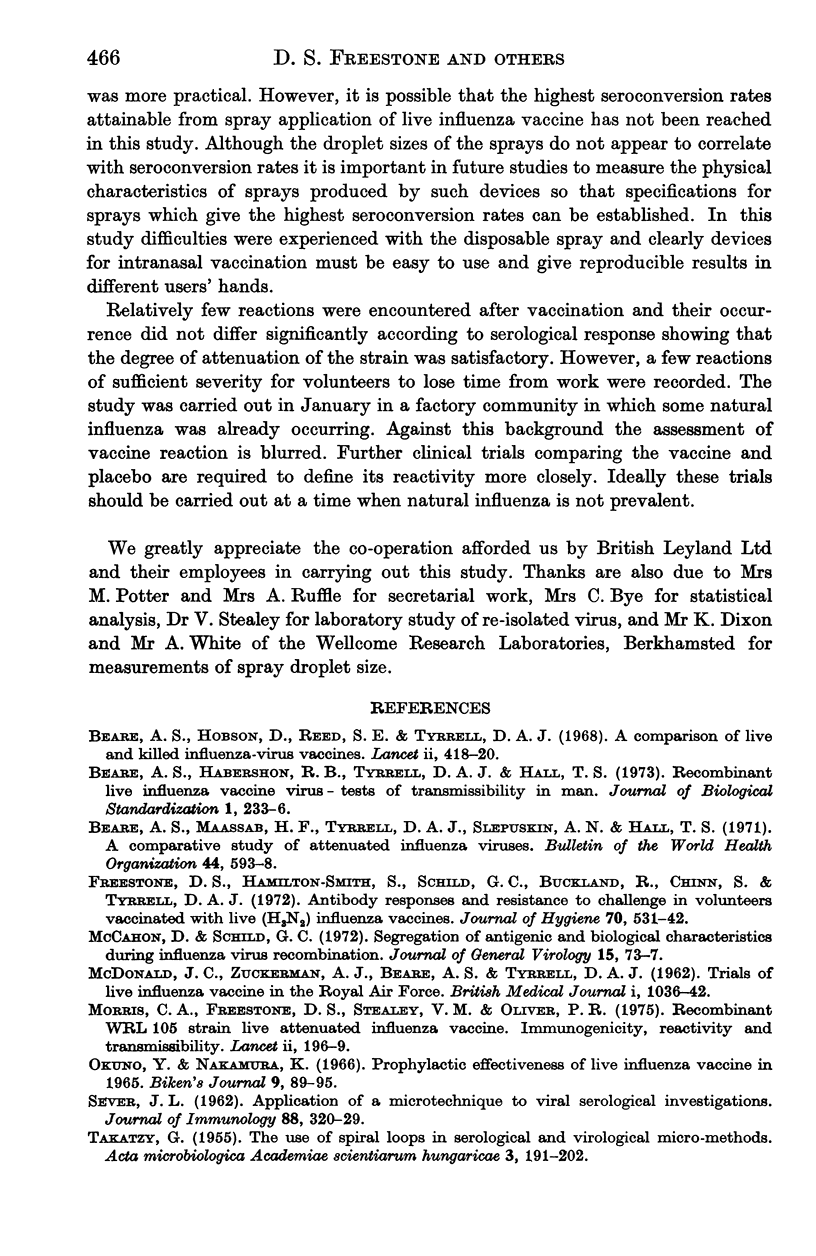
Selected References
These references are in PubMed. This may not be the complete list of references from this article.
- Beare A. S., Hobson D., Reed S. E., Tyrrell D. A. A comparison of live and killed influenza-virus vaccines. Report to the Medical Research Council's Committee on Influenza and other Respiratory Virus Vaccines. Lancet. 1968 Aug 24;2(7565):418–422. doi: 10.1016/s0140-6736(68)90463-7. [DOI] [PubMed] [Google Scholar]
- Beare A. S., Maassab H. F., Tyrrell D. A., Slepuskin A. N., Hall T. S. A comparative study of attenuated influenza viruses. Bull World Health Organ. 1971;44(5):593–598. [PMC free article] [PubMed] [Google Scholar]
- McCahon D., Schild G. C. Segregation of antigenic and biological characteristics during influenza virus recombination. J Gen Virol. 1972 Apr;15(1):73–77. doi: 10.1099/0022-1317-15-1-73. [DOI] [PubMed] [Google Scholar]
- Morris C. A., Freestone D. S., Stealey V. M., Oliver P. R. Recombinant WRL 105 strain live attenuated influenza vaccine. Immunogenicity, reactivity, and transmissibility. Lancet. 1975 Aug 2;2(7927):196–199. doi: 10.1016/s0140-6736(75)90670-4. [DOI] [PubMed] [Google Scholar]


